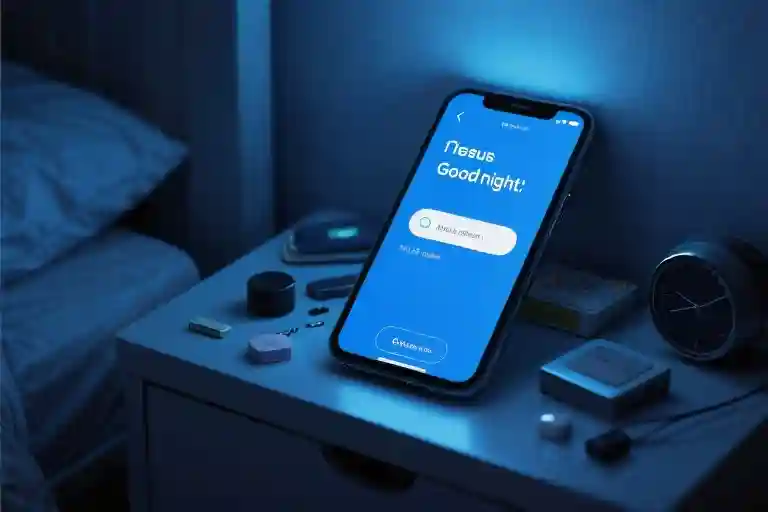Dating isn’t love. Sex isn’t love. Those words might sting at first glance, especially in a world where relationship milestones are measured by Instagram anniversaries and Valentine’s Day gift spreads. But let’s sit with that discomfort for a moment—because this truth could liberate you from years of chasing shadows.
We’ve been conditioned to confuse love with its shiny packaging: the 24/7 text marathons that leave your thumbs sore, the luxury gifts wrapped in department store perfection, the performative “look at us” social media posts. These cultural stand-ins for affection aren’t inherently wrong, but they’re not the heartbeat of true love either. Like mistaking a Christmas tree’s glittering ornaments for the living pine, we often focus on the decorations while missing the organic growth beneath.
Consider how modern dating culture sells us shortcuts to connection:
- The Currency Confusion: Believing expensive dinners equal deeper commitment
- The Availability Fallacy: Assuming round-the-clock messaging means emotional investment
- The Trophy Syndrome: Introducing partners primarily to showcase their achievements or appearance
These behaviors might generate dopamine spikes, but they’re ultimately love’s lookalikes—the synthetic sweeteners of human connection. Real love operates differently. It’s not about possession (“my successful man/my beautiful girl”) but presence. Not about measuring gestures, but nurturing a mutual space where both individuals can grow.
So if love isn’t these tangible transactions we’ve been taught to keep score of, what exactly is it? That quiet ache when their absence feels like a missing limb? The instinct to soften life’s sharp edges for someone, even when you can’t remove them completely? Perhaps it’s in the way you reach for their help with tasks you could easily do alone, simply because shared effort tastes sweeter than solitary efficiency.
This introduction isn’t meant to disillusion but to clarify. By distinguishing love from its counterfeits, we make room for the authentic connection that actually sustains us—the kind built on respect that honors boundaries, trust that allows vulnerability, and commitment that chooses “we” even when “me” seems easier. In the chapters ahead, we’ll map out how true love operates beneath modern romance’s noisy surface, why it often feels invisible compared to flashy substitutes, and how to cultivate it in your own relationships.
Because when you stop chasing love’s holograms, you might just find the real thing has been waiting quietly all along.
This Isn’t Love: What We’ve Been Getting Wrong
We’ve all been there – mistaking butterflies for forever, confusing possession for passion. In our swipe-right culture, we’ve collectively blurred the lines between temporary infatuation and true emotional connection. The truth? Most of what we call “love” today is just dopamine in disguise.
The Modern Love Mirage
Scroll through any social feed and you’ll see the same performance:
- Couples flaunting designer gifts #RelationshipGoals
- “Look what he bought me!” captions over champagne towers
- 24/7 texting streaks worn like badges of honor
These aren’t markers of true love – they’re transactions. A 2022 Pew Research study revealed that 68% of millennials equate romantic effort with financial expenditure. We’ve been conditioned to measure love in Instagrammable moments rather than invisible acts of care.
Side-by-Side: Performance vs. Presence
Surface-Level “Love”
- Bragging about your partner’s promotion at parties
- Posting “good morning” texts daily (but ignoring their work stress)
- Keeping score of who paid for which date
Quiet, Real Love
- Remembering how they take their coffee after night shifts
- Holding space when they cry about family struggles
- Celebrating small wins like their first sourdough loaf
The difference? One seeks external validation, the other builds internal connection. As relationship researcher Dr. Emily Anhalt notes: “Healthy attachment isn’t photographed – it’s felt in the safety to be imperfect.”
Why Social Media Distorts Love
Platforms reward what psychologist Barry Schwartz calls “the paradox of choice” – making us treat partners like customizable avatars. Consider these findings:
- Comparison Trap: 73% report feeling inadequate seeing others’ “perfect” relationships (Journal of Social Psychology)
- Instant Gratification: Matches trigger the same neural pathways as slot machine wins (Stanford Neuroscience Institute)
- Performance Pressure: 61% admit staging moments specifically for posts (Dating.com survey)
True love doesn’t need an audience. It’s the unposted moments – cleaning up their flu soup spills, laughing at inside jokes no one else gets – that create lasting bonds.
The Cost of Confusing Love
When we mistake these surface behaviors for real connection, we:
- Stay in relationships that look good but feel empty
- Overvalue grand gestures over daily kindness
- Burn out trying to maintain a “perfect couple” image
As therapist Esther Perel observes: “The quality of your questions determines the quality of your relationships.” Instead of “Does this look like love?” perhaps we should ask “Does this feel like home?”
Key Takeaways:
✓ Real love operates in quiet consistency, not public displays
✓ Social media rewards performative affection over genuine connection
✓ Lasting relationships prioritize presence over presentation
The Silent Puzzle: How True Love Actually Works
We’ve cleared the fog around what love isn’t. Now let’s examine what true love is—not through rose-tinted filters, but through the quiet, daily mechanics that make relationships endure. Unlike the performative displays we often mistake for love, real connection operates like an intricate puzzle where two people’s edges fit together without force.
The Core Elements That Make Love Last
1. Trust: The Invisible Scaffolding
Trust isn’t about sharing phone passwords or location pins. It’s the unshakable certainty that your partner will:
- Hold space for your vulnerabilities without weaponizing them
- Celebrate your independence rather than perceive it as threat
- Choose honesty even when silence would be easier
Scene: When food poisoning left me trembling on the bathroom floor at 3AM, my partner didn’t post ‘heroic caregiver’ selfies. They simply sat on the tiles rubbing my back—no audience, no social media points—just presence.
2. Respect: The Boundary Keeper
Healthy love maintains a sacred space between ‘us’ and ‘me’. This means:
- Honoring differences in social needs (introvert/extrovert balances)
- Protecting each other’s alone time without guilt trips
- Allowing separate hobbies and friendships to thrive
Contrast: A couple constantly tagging each other in memes about ‘annoying but lovable’ habits vs. partners who privately cherish quirks without turning them into content.
3. Co-Growth: The Compost for Connection
Unlike the stagnant ‘happily ever after’ myth, real love evolves through:
- Mutual but asynchronous development (one partner’s career peak while another heals)
- Shared curiosity (taking classes together, even if skills differ wildly)
- Safe conflict that repairs rather than wounds
The Psychology Behind ‘Filling the Gaps’
That peculiar sensation of needing someone’s help with tasks you’re fully capable of—like assembling furniture or choosing outfits—isn’t dependency. Psychologists call this ‘ritualized helplessness,’ a bonding mechanism where:
- Simple collaborations become intimacy touchpoints
- Interdependence strengthens without eroding self-sufficiency
- Small shared victories build emotional capital for harder times
Example: My grandfather still ‘needs help’ carrying groceries despite being perfectly able. What he really craves is those five minutes of walking side-by-side, hands brushing against the same paper bags.
The Silent Language of Real Love
Watch for these unspoken dialects in healthy relationships:
- Eye contact during group conversations that says ‘I see you’ without words
- Predictive care (filling your water bottle before you realize you’re thirsty)
- Memory markers (noticing when you rewatch a comfort movie and silently joining)
- Touch gradients from playful pokes to steadying hand-on-back in crowds
These micro-behaviors form love’s true vocabulary—far more eloquent than any staged Instagram post.
Why the Quiet Moments Matter Most
Neuroscience reveals our brains process subtle, consistent care differently from grand gestures:
- Dopamine spikes from over-the-top surprises fade quickly
- Oxytocin from daily reliability creates deeper attachment
- The ‘quiet ache’ of missing someone actually strengthens neural pathways
Next time you evaluate a relationship, ask: Do I miss their performance of love, or their essential presence? The answer holds the truth.
Love Under the Microscope: Turning Theory into Daily Practice
Understanding true love is one thing – living it is another. This is where rubber meets the road in relationships. Let’s examine how healthy love actually functions in the trenches of daily life through practical behaviors and thought patterns.
The Respect Factor: More Than Just Manners
Respect forms the bedrock of real love, manifesting in surprising ways:
- Sacred spaces matter: Healthy couples protect each other’s alone time without interpreting it as rejection. That hour with her book? His Saturday morning runs? These aren’t threats – they’re oxygen.
- Boundary etiquette: “I notice you’ve been checking my messages lately – can we talk about what’s making you uneasy?” replaces accusations with curiosity.
- Autonomy appreciation: Celebrating your partner’s independent friendships and hobbies demonstrates security, not possessiveness.
Communication That Connects: 3 Transformative Techniques
- The ‘I Statement’ Upgrade
- Weak: “You never listen!”
- Strong: “I feel unheard when conversations get interrupted – could we try taking turns?”
- Why it works: Eliminates blame while clearly expressing needs.
- The 10-Second Rule
Before responding in tension, mentally count while considering:
- Is this reaction about them or my past wounds?
- Will this build bridges or walls?
- What’s the kindest truth I can offer?
- The Appreciation Amplifier
For every critique, offer three specific positives:
“I love how you…”
“Remember when you…that meant so much”
“You’re amazing at…”
The Love Litmus Test: Which Pattern Fits?
Take this quick self-assessment:
When your partner spends time with friends, do you:
A) Feel genuinely happy for their enjoyment
B) Secretly track how long they’re gone
C) Demand equal “couple time” immediately after
During disagreements, do you:
A) Focus on understanding their perspective
B) Keep score of past mistakes
C) Shut down until they apologize first
(Answers leaning toward ‘A’ indicate secure attachment patterns)
From Knowledge to Muscle Memory
True love becomes instinctual through consistent practice:
- Morning ritual: Start days with one specific compliment
- Conflict hack: When upset, first verbalize three things you admire about them
- Weekly check-in: “How full is your emotional tank today?” replaces assumptions
Like any profound skill, love requires both the grand vision and the daily drills. What small act of real love will you practice today?
Love Detox: Debunking 5 Common Myths About True Love
We’ve grown up surrounded by dramatic love stories – the grand gestures, the jealous confrontations, the “I can’t live without you” declarations. Pop culture has sold us a very specific (and often toxic) version of what love should look like. But what if everything we thought we knew about love was wrong?
Myth 1: Love Must Be Dramatic to Be Real
The truth? Real love isn’t found in the shouting matches or tearful airport reunions. Healthy relationships thrive in the quiet moments – the shared silence over morning coffee, the unspoken understanding when life gets tough. That couple who never fights? They’re not “boring” – they’ve likely mastered the art of calm communication.
True love shows up in consistency, not chaos. It’s waking up early to make your partner’s lunch even after five years together. It’s remembering how they take their tea without asking. These small, repeated acts of care create a foundation far stronger than any dramatic declaration.
Myth 2: Checking In Equals Caring
Here’s the uncomfortable truth: Constant “Where are you? Who are you with?” texts aren’t signs of deep love – they’re symptoms of insecurity. Real trust means giving your partner space to breathe without interrogation.
Healthy relationships have breathing room. You don’t need to share every location pin or justify every lunch date. True security comes from knowing your partner chooses you daily, not from monitoring their movements.
Myth 3: Fighting Means You Care
Conflict isn’t inherently bad, but the idea that frequent fighting indicates passion is dangerous. Love shouldn’t leave you emotionally bruised. Healthy couples disagree, but they do so with respect – no name-calling, no bringing up past mistakes, no hitting below the belt.
The strongest relationships aren’t those without arguments, but those where both partners feel safe to express themselves without fear of emotional retaliation.
Myth 4: Love Means Losing Yourself
Contrary to romantic comedies, merging into “we” shouldn’t erase your “me.” Healthy love allows both people to maintain their individuality – separate hobbies, different friends, personal goals.
If your relationship requires you to abandon your identity, it’s not love – it’s possession. True partnership celebrates each person’s uniqueness while creating something beautiful together.
Myth 5: Love Should Be Easy
The most damaging myth? That “if it’s real, it shouldn’t be work.” Even the best relationships require effort – the difference is, in healthy love, that work feels meaningful rather than exhausting.
Love isn’t about finding someone perfect, but about choosing someone again and again, working through challenges together, and growing side by side. As the saying goes, “A strong marriage isn’t when the ‘perfect couple’ comes together. It’s when an imperfect couple learns to enjoy their differences.”
The quiet truth: Real love isn’t fireworks that fade – it’s the steady warmth that remains when the sparks settle. It’s not about dramatic gestures, but about showing up, day after ordinary day, choosing each other in a thousand small ways. That’s the love worth finding – and keeping.
The Silent Puzzle: How True Love Fits Together
Love isn’t about completing each other’s sentences, but about completing each other’s souls. Like two puzzle pieces from different sets that somehow create a more beautiful picture together, real love fills the empty spaces we didn’t know existed.
The Geometry of Emotional Wholeness
When we find true love, we discover something remarkable – it doesn’t demand we change our shape, but celebrates how our edges naturally align. The gaps in your confidence meet their reassurance. Their moments of doubt find shelter in your certainty. This silent exchange happens without fanfare, like breath moving in and out of lungs that have finally remembered how to work properly.
Psychologists call this ‘secure attachment,’ but poets have always known it as homecoming. That quiet moment when you realize you’re holding someone’s hand not because you’re afraid they’ll leave, but because it’s where your fingers belong. The way their laughter becomes your favorite sound, not because it’s perfect, but because it’s perfectly theirs.
The Unspoken Language
True love communicates in glances across crowded rooms, in forehead touches after long days, in coffee cups refilled without asking. These are the vocabulary of a language that needs no translation – where ‘I brought you soup’ means ‘I honor your vulnerability’ and ‘I’ll drive tonight’ translates to ‘your exhaustion matters to me.’
Unlike performative relationships documented for social media, this quiet understanding leaves no digital footprint. The most profound moments often happen off-camera: the shared silence during a sunset, the uncelebrated sacrifices, the private jokes that would mean nothing to anyone else.
The Priceless Currency
In a world obsessed with measuring affection through grand gestures, true love transacts in a different economy. Its currency includes:
- The patience to listen without solving
- The courage to be wrong sometimes
- The wisdom to know when space is the greatest gift
- The trust that turns separate lives into parallel journeys
These invisible deposits compound over time into something no diamond could represent – the quiet certainty that someone has memorized the map to your heart and will never misuse it.
The Forever Promise
As we reach the end of this exploration, remember: love isn’t about finding someone perfect, but about seeing someone perfectly. Not about completing each other, but about complementing each other so completely that the seams between ‘you’ and ‘me’ dissolve into ‘us.’
Like that final puzzle piece sliding into place, true love creates a picture more beautiful than either piece could imagine alone. And in that completion, we find the simplest truth – the most ordinary moments become extraordinary when shared with someone who speaks your silent language.
For whoever finds their love, may your love last forever. Not because it’s perfect, but because it’s perfectly yours.





